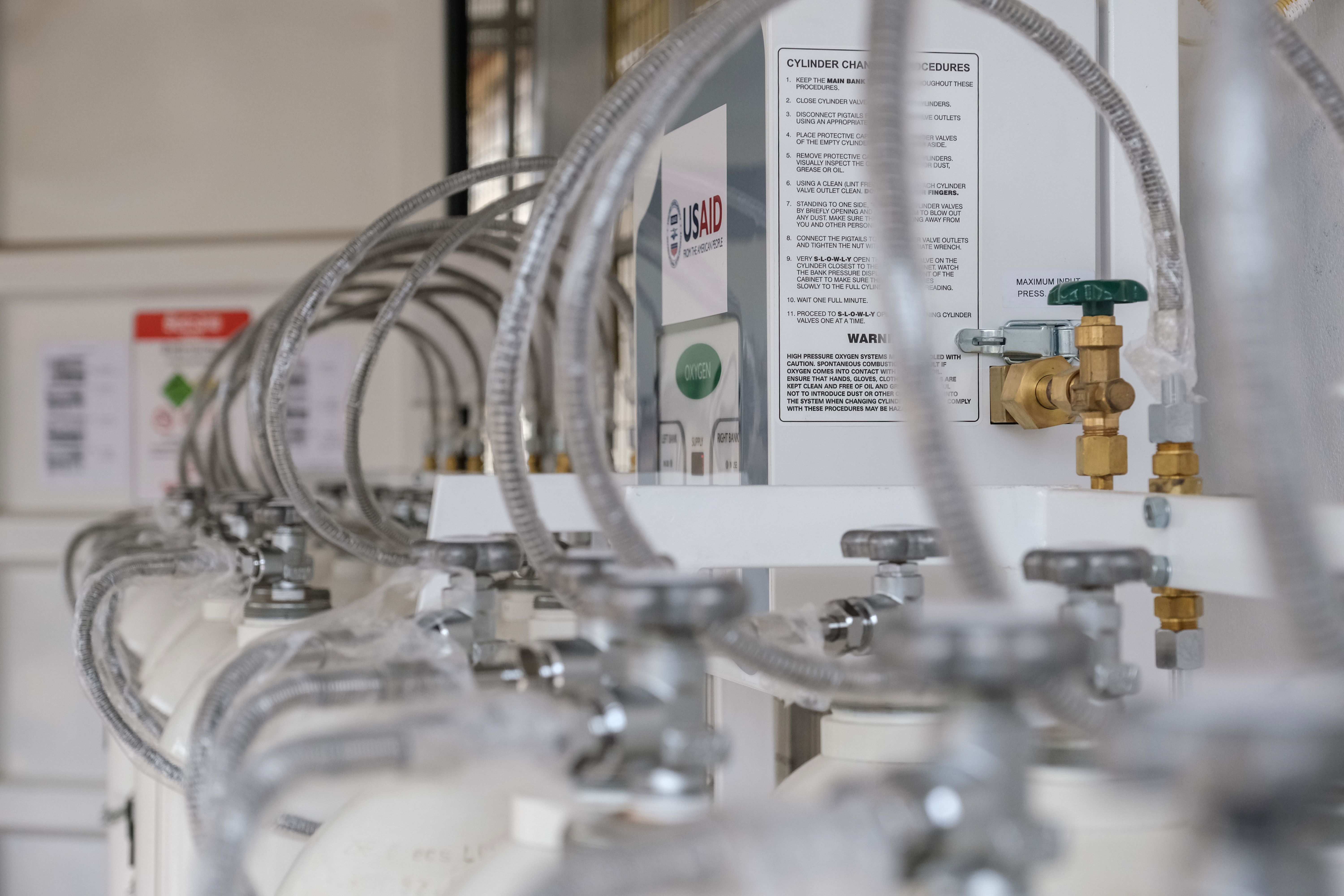Essential medical oxygen is reaching more patients than ever at Savannakhet Provincial Hospital. Installation of USAID-supported, WHO-implemented oxygen piping and distribution systems means the life-saving medicine is now directly, continuously, and rapidly available to high-risk patients in critical wards like the emergency room, intensive care unit, surgical and neonatal units.
The nearly 2.5 billion Lao Kip (US$ 120 000) system – including a comprehensive oxygen distribution network, more than 300 metres of piping with sterilization capabilities, a central control unit, two backup systems, and 55 outlets – was handed over to the hospital, Minister of Health, Dr Bounfeng Phoummalaysith today by USAID Country Representative, Michael Ronning, UN Resident Coordinator, Bakhodir Burkhanov and WHO Representative, Dr Ying-Ru Lo.
The new infrastructure builds on the recent opening of Lao PDR's second provincial oxygen plant at Savannakhet Provincial Hospital, supported by WHO. This plant enables the hospital to produce its own oxygen for the first time to ensure a reliable source of oxygen for patients, reduce reliance on external supplies, and lower purchasing costs.

The donation is part of the extensive USAID’s assistance for oxygen via WHO in Lao PDR. This included ensuring oxygen supply security to all 23 COVID-19 treatment facilities across the country, through 206 million litres of cylinder-based oxygen for high-risk COVID-19 patients, as well as other equipment and supplies to provide optimal care to COVID-19 patients during the pandemic and beyond.
"Expanding oxygen access at Savannakhet Hospital is a critical step forward in ensuring all Lao citizens receive the quality healthcare they deserve," said Dr Bounfeng Phoummalaysith, Minister of Health. "This life-saving initiative will bring assurance to families knowing their loved ones have immediate access to this essential life support during the most critical situations, and we greatly appreciate USAID’s significant support."
"This expanded oxygen system is a game-changer," said Dr Chanthala Phamisith, Hospital Director. "Previously, delivering oxygen to critical patients required moving oxygen tanks around the hospital, taking time and resources. Now, high-risk patients can receive the oxygen they need immediately, saving lives and improving their chances of recovery."
"At USAID, we believe access to essential healthcare is a fundamental human right," said USAID’s Country Representative, Michael Ronning. "Supporting the expansion of oxygen access at Savannakhet Hospital is a testament to our commitment to the Lao people and their well-being and our collaborative partnership with WHO. This health-preserving system will have a lasting impact on countless families beyond COVID-19 needs and strengthen the healthcare system for generations to come – we are proud to be able to continue our assistance in this and many other health areas in Lao PDR."

Similarly, WHO has been a leading supporter of oxygen supply in Lao PDR during and following the COVID-19 pandemic, providing medical oxygen equipment, oxygen itself, training for healthcare workers, and technical assistance, as part of longer-term efforts to improve healthcare services and build a resilient and sustainable health system. WHO recently donated three provincial oxygen production plants, valued at 33.5 billion Lao Kip (US$ 1.7 million), to Savannakhet, Oudomxay and Luang Prabang hospitals.
"Establishing oxygen production and supply capability in Lao PDR is crucial for strengthening healthcare infrastructure and emergency response capabilities," said WHO’s Dr. Lo. "Having reliable oxygen access is essential for treating various medical conditions, especially during emergencies. USAID has been a long-term partner in this field, providing assistance at the outset of the pandemic – ensuring no oxygen supply shortages for treating severe COVID-19 cases – while this new support continues to build critical care capacity in the long term."
Medical oxygen tackles major health challenges. It battles pneumonia and aids COVID-19 patients struggling to breathe. During surgery, it ensures patient safety, and in childbirth, it supports both mothers and fragile newborns. Beyond these critical moments, oxygen helps those with chronic lung issues and is a vital healthcare tool in many other situations.

